Introduction:
As many people on TMD are aware, Drew Levin recently put forth a video series in which he has piloted several different Vintage decks on MTGO. One such deck was Vasu Balakrishnan’s top 4 UW Stoneblade list from the NYSE. To summarize the videos, Drew’s experience was less than positive and he was somewhat stupefied that such a deck was performing well in Vintage tournaments. Rather than focus on Drew’s comments (there is a thread for that already), I wish to use it as an example of a very accomplished Magic player picking up a UW control deck and struggling to make it work. He is surely not alone and that is my motivation in writing this primer - to give people who wish to play UW control a rough idea of the nuances involved. While I believe the archetype as a whole has the ability to compete in virtually any metagame, success with an individual list is highly dependent on both the metagame and the pilot's familiarity with the match ups. I was brought into Vintage about a year and a half ago by “the Bomberman” himself, Justin Kohler, and his insights were invaluable when I first began playing the deck.
An Overview:
Instead of beginning with decklists, I feel it would be wisest to provide an overview of the variants. The core of the deck consists of the typical UW control cards: Force of Will, Mental Misstep, Swords to Plowshares (either in the SB or main), Jace/Fact or Fiction for card advantage, etc. Unfortunately for someone attempting to write a primer, that is where the similarities in card choices end. The variants in particular tend to be named by a unique inclusion such as Auriok Salvagers in Bomberman and Restoration Angel in Blue Angels. However, even within these there is quite a bit of variance. For instance, Vasu is running Stoneforge Mystics but is also running Restoration Angels, Snapcaster Mages, and Fact or Fictions with Jaces. Justin Kohler has also recently begun running Stoneforge Mystics in the main but eschews Angels and Snapcasters for Trinket Mages and trinkets. He also has been complementing Jaces with Magus of the Future instead of Fact or Fictions. Neither of these approaches are necessarily wrong as both Vasu and Justin have had success with their builds, but making these changes influences the decks match ups in subtle ways and reflects their differences in playstyles.
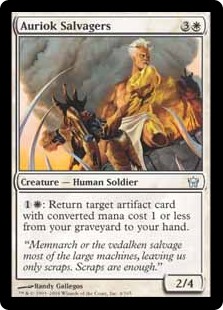
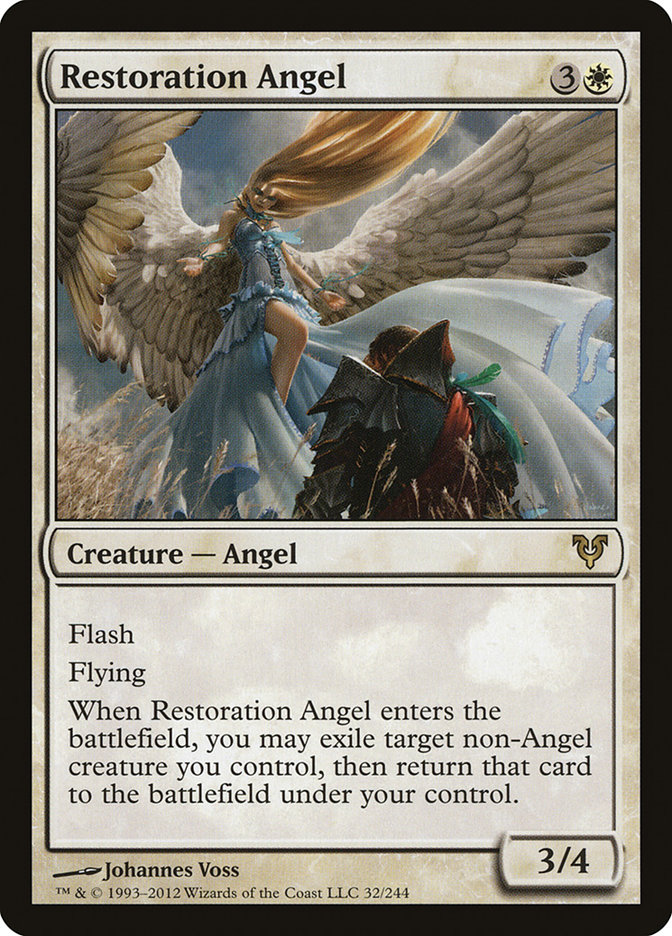
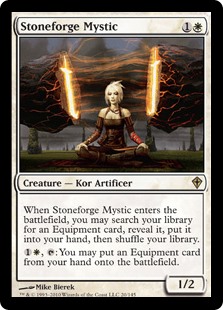
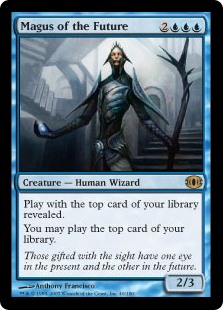
UW Bomberman:
Starting with the “original”, UW Bomberman was the deck that Justin Kohler terrorized the Northeast US with for over a year. The term “the Kohler” has become embedded in the regional lexicon and is synonymous with a turn 1 Jace. For a stock list, I recommend
http://www.tcdecks.net/deck.php?id=12974&iddeck=95189. Briefly, the deck runs the Trinket Mage package and Auriok Salvagers - with Black Lotus this produces infinite mana of all colors. The player can then draw his deck with Aether Spellbomb or Engineered Explosives/Sensei’s Divining Top (tap Top to draw a card and in response blow EE at 1; Top is destroyed but you still draw a card; return both with Salvagers, rinse and repeat), bounce all the opponents creatures with Aether Spellbomb, destroy all nonland permanents of converted mana costs 0, 1, 2, 3, and 5 with EE (at 4 EE kills Salvagers which speaking from experience is quite awkward), and if necessary or if the pilot is bored, Clique away all nonland cards in the opponent’s hand by repeated bouncing Vendilion Clique with Aether Spellbomb and recasting it. The deck normally wins by casting a bunch of dorks and Time Walk to attack for lethal next turn. If the deck has to pass the turn back to the opponent, it normally does so with a hand full of counters and with the opponent having nothing relevant in hand. This combo is particularly resilient in that artifact hate, counterspells, most graveyard, and most artifact removal is ineffective at disrupting the combo. Cavern of Souls provides the ability to cast Auriok Salvagers uncounterably and if Black Lotus is countered, the combo can be reattempted next turn. It is relatively easy to play around cards like Tormod's Crypt and Surgical Extraction as Salvagers' ability can be activated in response.
The advantages of Bomberman are that the deck can get free wins from Auriok Salvagers. This can be beneficial to newer pilots who may have difficulty grinding out wins with Jaces and turning 2/x creatures sideways (the combat step is often the Vintage player's bane #stinkweedimphasdeathtouch?). It may also be optimal in a relatively unknown metagame as the other options tend to be customized for specific metagames and the Bomberman combo has the most raw power and the ability to win from horrible board states through the combo. The disadvantages are that Auriok Salvagers tends to be rather weak by itself. Occasionally, you can return EEs, misstepped Tops, or destroyed Moxen, but other times the card is Pillarfield Ox with a better creature-type ("May starving fleas birth a thousand generations on your stubborn hide, cow!"). It is in general not very strong against Workshops as a single non-Lodestone sphere effect prevents the combo and it does not block Lodestone effectively.
Blue Angels:
Blue Angels first emerged about a year ago at the previous NYSE where it was piloted by Mike Egan and Craig Berry to top 8 finishes. It also placed Taylor Pratt in the top 8 at Vintage Worlds 2013. As it was relayed to me by Tom Dixon, the main impetus with cutting Auriok Salvagers for Restoration Angels was that they believed that Salvagers was the weakest card in the deck by far and that many games were winnable without the combo. Restoration Angel was chosen as it interacted favorably with Vendilion Cliques and Trinket Mages, dodged both Lightning Bolt and Abrupt Decay, the premier removal spells at the time, and was one of the most effective means of pressuring opposing Jaces in the Blue mirror. Against Workshops, it trades with Lodestone on defense and flies over him on offense and can be cast through a Tangle Wire trigger by floating mana, allowing the trigger to resolve, and then playing the Angel (possibly untapping another creature as a bonus). Disadvantages of the card are that it is weaker against dedicated combo decks, Oath, and Merfolk. It makes Cavern of Souls more difficult to play with as it has a non-overlapping creature type (though this can be used as a bluff) and along with other White cards, dilutes the consistency of Force of Will. Against other Blue control decks and Fish decks, it is quite strong and I know Rich Shay played four Restoration Angels at Calvin's Invitational.
Dance, Magic, Dance:
Speaking of Calvin's Invitational, the deck that was the talk of the tournament was Dance, Magic, Dance. Rich Shay, Craig Berry, and Brian Coval placed in the top 16 with the list and I wholehearted recommend Rich Shay’s deck analysis and the resulting conversation, available here:
http://www.themanadrain.com/index.php?topic=46395.0. At the time the metagame had a noticeable absence of Shops and an influx of creature-based Fish decks, Jace control decks, and Storm decks. The deck’s primary innovations were the rediscovery of Fact or Fiction along with Spirit of the Labyrinth. Instead of reiterating Rich Shay’s points, I would encourage you to read the link above. I will note that the reports of Shop’s death were greatly exaggerated and Shops took ¾ of the top 4 along with the NYSE a month later. Both Rich and Craig happened to run into Justin Kohler and his Stoneforge Mystics, which was protected by both Cavern of Souls and counterspells. A 4/4 Lifelinking, immortal beater matches up quite favorable against Angels and Spirits. The deck is not very common now but elements of the deck have persisted in more recent Stoneforge lists including FoF, either exclusively or as a split with Jace, and a resurgence in Restoration Angels.
UW Stoneblade:
We finally get to the deck that initiated this discussion. Stoneforge decks have emerged as the format has become more creature-dominated. While Stoneforge Mystic has been seeing play intermittently for sometime in Vintage, it has taken off recently. The advantages of the Stoneforge package are quite clear as are the disadvantages. It is at its best against Fish, Merfolk, Shops, and other UW creature-based control decks and at its weakest against Oath and dedicated Storm decks. A few unintuitive considerations for Vintage are that incorporating the Stoneforge package along with Restoration Angels, for instance, makes Force of Will less consistent; and that the mana becomes slightly more difficulty as Cavern of Souls can be used to cast the Mystic but not activate its ability (Vasu has been running Karakas as a 17th land and white-source with upside).
Analysis of more general card choices:
Trinket Mage package:
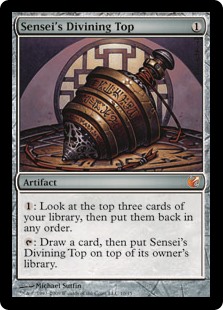
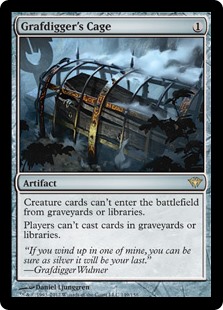

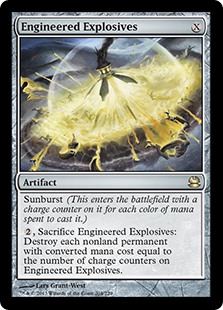
The Trinket Mage package refers to the Mage himself and the “Usual Suspects” of trinkets that accompany him. The main benefit to running the Mage is the versatility the card presents. With the Moxen he functions as a Civic Wayfarer and with Black Lotus he is a better Burning-Tree Emissary. With Aether Spellbomb he is a Man-o’-War or Merchant of Scrolls and with Engineered Explosives he becomes a Nekrataal, Viridian Shaman, or Aven Cloudchaser. Grafdigger’s Cage turns him into a vicious Yixlid Jailer/Withered Wretch hybrid. Like a certain sailor man, once he eats his Sensei's Divining Top he becomes the mighty...Tomorrow, Azami’s Familiar (OK, some of these associations were pretty loose). One thing I would recommend is try to predict how the game is going to play out when casting Trinket Mage. “Is the only way my opponent gets back in the game Yawgmoth’s Will (get cage)? Tinker for Time Vault (get that SB Pithing Needle)? successfully attacking my Jace with Weenies (get EE or Spellbomb)? Do I need mana for the next turn or for the next several turns? (Moxen vs Lotus) Is this game going to go on for a long time (grab Top)? Did I happen to draw Cavern of Souls + Mana Crypt + Mox and can’t play that turn one Jace with Force of Will back-up? (get Lotus, Justin Kohler. #FirstWorldProblems). In general, the Trinket Mage package is particularly strong in Bomberman, against Oath and Dredge (redundancy of hate), and in diverse metagames because of its versatility. It is much weaker against Fish decks and Merfolk, where the Stoneforge package excels. There are also diminishing returns with Restoration Angel and those decks will often shave a Trinket Mage or cut them altogether.
Jace, the Mind Sculptor:
I am not going to write that much about Jace as I feel his power and versatility is relatively well-known. Instead, I would like to focus more on using him optimally (let’s be honest, it’s not like any of his abilities are bad). Brainstorm is likely to be correct 75% percent of the time but there are several instances in which Fate Sealing/Scrying and Unsummoning are valuable (and I don’t mean the obvious situations like my opponent just Tinkered for Blightsteel or Nice Lightning Bolt, Bro). The more experienced I became with Jace, the more often I found myself Fate Sealing. In general, controlling your opponent’s draws constrains their options and allows you to synchronize your answers to their draws. For example, if your hand contains Mental Misstep, Swords to Plowshares, and Spell Snare and your opponent is Hellbent, you could Brainstorm and try to hit a hard counter or you could Fate Seal your opponent. See an Ancestral Recall, “You got it”. See a Dark Confidant, “You Betcha.” See a Yawgmoth’s Will, “Oh Hell No.” With the Unsummon ability, it can be used in a racing situation to out tempo the opponent while your dudes close out the game or to reuse a creature with a comes into play ability. I used this multiple times in Bomberman as the first Trinket Mage can fetch Lotus and generate infinite mana with Salvagers, then be bounced and recast to find Spellbomb (thanks to Tom Dixon for reminding me of this). Both of these scenarios require experience with the deck and underscore the difficulty of simply picking the deck up and playing it.
Sensei's Divining Top:
Get ready for quite the onslaught of text as this is my favorite card in Vintage and one of the more underappreciated cards (IMO) in the format. When he first began running Bomberman, Justin Kohler started with a 1:1 split between Top and Brainstorm. He soon noticed that Top was outperforming Brainstorm and cut it for a second copy. The reasoning behind this is not intuitive: after all Brainstorm is restricted and the consensus most powerful card in Legacy. There are several things that have to be taken into consideration with Brainstorm. When Brainstorm was restricted in 2008, Gush was one of or perhaps the premier strategy in Vintage. Gush decks naturally led to the accumulation of lands in the pilot’s hand and Brainstorm took full advantage of this by recycling these dead cards into the deck and contributing to a combo-kill with Fastbond or Yawgmoth’s Will. Brainstorm also plays an important role in Grixis Control by shuffling in dead cards such as Blightsteel Colossus back into the deck for fresh cards. Games with these decks do not typically last as long. Grixis is capable of a quick Tinker into robot or Vault/Key and Gush can combo someone out on the second or third turn if necessary.
UW control decks do not typically have truly “dead” cards - Grafdigger’s Cage is probably the closest in the Bomberman deck. The deck does not generate burst card advantage - Jace generates +1 card the second turn he is in play whereas Gush generates +3 cards immediately for zero mana. Most UW control decks lack a combo kill and are literally incapable of ending the game before turn 5 or 6. Even with the Bomberman combo, I killed on turn 1 once and turn 2 about five times out of a couple hundred games and many more practice games. Brainstorm provides a temporary advantage but one that does not scale as the game progresses.
Enter Sensei’s Divining Top. One of the few cards to be banned out of sheer annoyance, Top actively incentivizes players to prolong games. Each shuffle effect allows the player to look at 3 new cards, each turn spent allows the pilot to customize their hand. Top is the perfect reactive card: you can keep that Spell Snare floating on the top of your deck until it becomes relevant or you elect to shuffle it away to look for another answer. In essence, the style of most of these decks perfectly aligns with the Durdle Dradle. There are few instances when UW decks cut Top completely and most of these involve both Stoneforge Mystic and Snapcaster Mage as Brainstorm provides a means of shuffling away drawn equipment to maximize the value of the Mystic and is another Snapcastable spell. Stoneforge Mystic also provides one of the fastest clocks and thus lessens to benefit of Top over the long game.
Vendilion Clique:
In the interest of full-disclosure, I have an incredible man/woman/androgenous faerie beings crush on Vendilion Clique. It is a very close second behind Sensei’s Divining Top on my favorite cards in Vintage list. This wasn’t always the case though. When I first began playing, I found it very difficult to correctly play Clique and as a result underestimated its power. Timing in particular is one of the most difficult aspects of the card - I have broken these down below.
-Opponent’s Draw Step: For many players (including me at first), this is the default point at which to cast Clique. Your opponent draws that shiny Yawgmoth’s Will and you strip it from his hand before he can cast it. This isn’t necessarily a misplay but it’s better to consider other options first. Like…
-Opponent’s End Step: This may seem wrong at first as you are giving your opponents the option to cast their best spells during their turn, but by passing the turn with mana up you are representing a counterspell. If you have the counter and they play into it, great - they had to use mana to cast the spell, you may get to untap with Drain mana up, and can play Clique on their next turn. If they don’t run their spell out to get countered, your EOT Clique accomplishes pretty much the same thing as casting in during the opponent’s draw step, but the opponent does not have the opportunity to cast their next best card or a newly drawn sorcery/artifact/creature or hit their land drop if they missed it.
-Opponent’s Combat Step: Many players tend to attack before playing spells. Casting a Clique in combat often allows you to ambush your opponent’s creature and take their best spell anyway. I have run decks with as many as 4 Cliques and being able to use it as a removal and a discard spell is valuable.
-In Response to Action: Often cracking a fetch is an indicator that the opponent is about to cast a spell. Similarly, casting multiple Moxen, rituals, or other artifacts can also signal that your Storm opponent is about to go off. It is incredibly satisfying to take the opponent’s draw 7, Mind’s Desire, or Yawgmoth’s Bargain after they have invested so many resources into casting it. In addition, you can cast Clique in response to your opponent’s spell to clear out a counterspell for your counter.
Another challenge when playing Vendilion Clique is which card to take. While the answer is highly dependent on the game state, the question that needs to be ask is not “which card is best?” but rather “what is my game plan and how does my opponent’s hand interact with it?” If the opponent has a hand chock full of counters and you resolved a Clique off Cavern, you are probably going to win the game by attacking and casting other uncounterable creatures rather than forcing through a Jace or countering their win conditions. In that case, it is better to let them keep their hand rather than dig them closer to a Tinker or Yawgmoth’s Will. Other times, your hand may match up perfectly against their hand with Mental Misstep, Spell Snare, Flusterstorm, Swords and other situational answers dealing with all of their threats. In this case, the most dangerous card is the unknown one on top of the opponent’s deck. As I became more experienced with the deck and matchups, I took fewer and fewer cards with Clique.
Magus of the Future:
Weird inclusion, I know. Did you know that Future Sight was a Vintage playable card, typically brought in from the sideboard for the Blue mirror? Anyway, I blame Brian Kelly for discovering the Cavernable version. Brian (or Ryan as he is known to the DCI) has really explored different applications of Cavern of Souls into random humans and contributed to the Mayor Fish deck and several more interesting blue decks. One of his discoveries was Magus of the Future in a 4 color Bomberman list. As Vito said shortly before defeat, “Oh, Magus of the Future and infinite mana seems pretty good.” Magus of the Future has since become adopted by other members of the Vintage community with me picking it up and then Brian and I convincing Justin to run as a one of on the way to Elmira. After playing it in the Top 8 with several Moxen, Academy, and Top in play, Justin proceeded to draw about 10 cards a turn before casting a Grafdigger’s Cage off the top of his deck, being informed by me that this no longer allows him to cast cards from his library (his Cage was Chinese so I had to get one of mine from my binder), then using his Top to draw the Engineered Explosives on top of his deck, blowing up his Cage, and drawing 3-4 more cards before passing the turn. At this point, his opponent decided that Justin was having too much fun and conceded. I was also informed that Justin managed to equip two Batterskulls to his Magus of the Future at Elmira last week making it a 10/11 Lifelinking, Vigilance Future Sight, which I thought was kind of building your own Griselbrand.
While Magus of the Future could readily be dismissed as a “fun” card, it is important to view the cards strengths and weaknesses. It is very synergistic with Top and Trinket Mage, uncountability turns it into the ultimate trump card in the Blue control mirror, and decks are generally better prepared to deal with Jace than with Magus. Like Jace if you untap with it in play, you are very likely to win. The card does not work well with Grafdigger’s Cage and if the format is heavy in Oath, I would likely look in other directions. It is also awkward against Shops but can still generate card advantage together with Top.
Other cards:
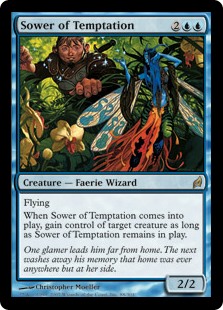
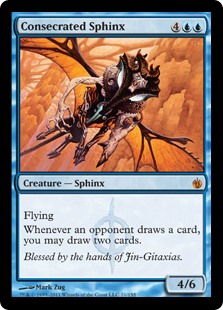
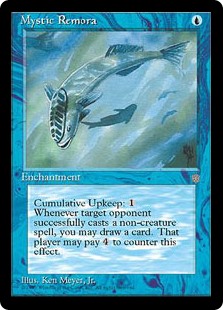
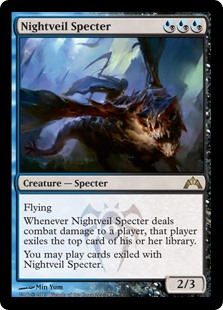
Rather than attempt the impossible task of listing every other card you can play in a Vintage UW control deck, I would simply recommend keeping an open mind and having fun with your card choices. Credit for the cards above goes to Josh Potucek, David Rocher, Ferran Relat, and Carles Minon.
General Advice for Playing the Deck:
1) Customize the deck to your metagame and playstyle. This may mean that you have to scrub out of a local tournament to get an idea of the metagame or get several matches in to discover how you play the deck.
2) Much of the deck’s success is dependent on proper threat assessment. The Durdler’s Manifesto includes using your life as a resource and that may mean letting a Delver resolve in the early game to protect a Jace from a Lightning Bolt later. Success in the Shops match up involves spending just enough resources on their disruption while then managing the remainder of their threats. The long game is won with Jace or with a flying beatdown.
3) Always seek advice from other players who have played the deck. Throughout my development with the deck, I credit Kohler for helping me initially but also Tom Dixon and Josh Potucek for insights into various card choice and plays. One thing about these three is that they rarely agree, despite their success. I also disagree with them too on a great many things, but hearing their perspectives helped to challenge my preconceptions and allowed me to grow as a player. The most important advice that I can give for this is do not get hung up on what the “right” play is or even the “optimal” play. The deck and format are too complex and most plays quite simply do not have an optimal play. By that same token, do not tilt when a particular line does not work out or even if you frankly punt.
Conclusion:
Let us briefly return to Drew’s video series. As Rich Shay would go on to say in the comments, “The deck is underpowered, but it isn't made out of any particular misunderstanding. Rather, as with many such decks, it is a response to a specific metagame. In a metagame full of creatures and planeswalkers, a deck like this is extremely powerful as a response. This might differ from the Magic Online metagame, of course.” A few days after Drew’s article, I took UW Zardoz on the stream and managed two 3-1’s before 4-0’ing my third daily. I did this with a deck full of Trinket Mages and Grafdigger’s Cages along with Engineered Explosives and Spell Snares, which took into account the prevalence of Oath in the metagame. I also used Sower of Temptation as my four drop of choice, which is a backbreaking card in a format full of creatures, not to mention stealing a Griselbrand off a Cavern of Souls or after a Show and Tell is pretty much the nut high. On the other hand, I moved Flusterstorms and Mindbreak Traps to the main as Shops is currently bugged on Magic Online and moved Swords to Plowshares and Plains to the sideboard. Naturally, I got paired against a BUG Fish deck and Coopes on some Humanstorm variant in subsequent rounds and picked up two quick losses. It is my hope that people who look to pick up a UW deck will find this primer helpful in adapting the deck to their metagames and will not dismiss the archetype out of hand. I welcome comments, criticisms, and suggestions below and will continue to update this primer based on your input.

